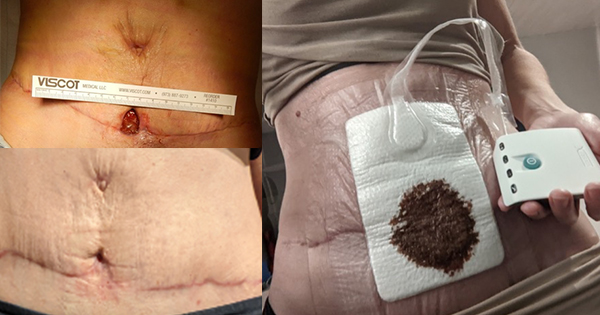We hear a lot about how much pressure ulcers cost the US economy. Padula and Delarmente (2019) estimated that government money spent on hospital-acquired pressure injury in 2016 exceeded $26.8 billion. About 59% of these costs were disproportionately attributable to a small rate of Stage 3 and 4 full-thickness wounds. Pressure ulcers are the single most costly chronic wound in the UK’s NHS, costing around £3.8 million per day in England alone, while the incremental cost of treating a pressure ulcer is up to £374 per day (NHS Improvement, 2018). But there is more to the story than financial cost – there is human cost for the patient.
When patients develop full-thickness pressure ulcers during a hospital stay, any rehabilitation is delayed because the patient cannot sit for the needed number of hours required. Remaining on bed rest or in a chair further debilitates the patient, so that by the time the patient can attend rehabilitation, the patient is quite far behind.
Pressure ulcers hurt. Patients who are fully sensate will be the best estimate of the type and severity of the pain. I have heard from many patients that the open wound burns and when dressings are changed, the pain is sharp due to the exposed nerve endings. When you pull off dressings, please do not say to patients: “This will only hurt for a second.” Just because you don’t see them or hear them doesn’t mean the pain has subsided.
Pressure ulcers smell and the odour from anerobic organisms can be nasty. These symptoms can reduce the willingness of people to visit the patient. The patient has to cope with the smell continuously.
Let’s talk about the biggest consequences: loss of limb and life. Estimates of death from sepsis from pressure injury is about 60,000 in the US each year (Padula and Pronovost 2018). Old conservative figures identify 37,000 deaths per year in the UK (Daniels, 2011).
Patients with a full thickness pressure injury on the buttocks often have difficulty keeping the wound clean. Diverting colostomy is a common procedure for these patients when wound contamination is frequent and obviously harmful. I commonly find that antibiotics were initially given for wound infection, then the patient developed diarrhoea from the antibiotics and then the wound is further contaminated. The answers to this issue would be to get the wound healed or closed with flaps, but the process of preparing the patient for flap surgery is long and detailed. Waiting for a full thickness wound to heal secondarily takes a year or more, and during that time, many new complications can arise.
Patients with full thickness heel pressure ulcers with osteomyelitis commonly end up with amputation of the leg. Delayed healing is due to many factors, but the end point is the same.
What’s the answer? Yes, I have heard you say: “I want to be driven out of business” by having no new wounds, but that is not likely to happen. Societies are ageing, with more chronic diseases. During the last decade or so patients admitted to intensive care units (ICU) have been increasingly older and have more comorbidities.
We seldom limit options for surgery or aggressive treatments today, largely because many operations are laparoscopic and can be followed with optimal supportive intensive care. The top five patient conditions requiring admission to an ICU are respiratory failure requiring ventilator support is the most common, followed by acute myocardial infarction, intracranial haemorrhage, sepsis/septicaemia requiring ventilator support, and percutaneous cardiovascular procedures. I am certain you can remember patients who you have treated that were admitted for these problems.
The monetary cost of pressure ulcers is fairly easy to compute. But the human suffering from pressure ulcers is often beyond measure.


